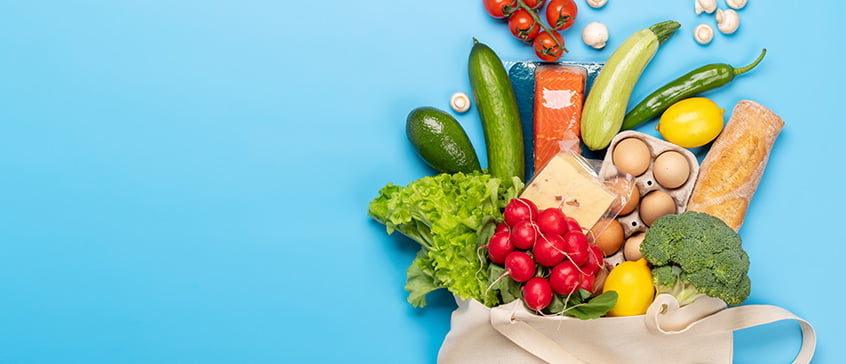Home / Humanities, Social Sciences and Law / The forces influencing your grocery shopping
The forces influencing your grocery shopping

by Instructor Dr. Ali Kenefick
Have you ever walked into a supermarket with a simple list, only to leave with a cart full of unexpected purchases? You’re not alone. From the moment we step through the automatic doors, we’re entering a highly engineered environment, one meticulously designed to shape our buying habits in ways we rarely notice.
The hidden strategies in supermarkets
Supermarket layouts, product placement, and even the music playing overhead, are all part of a complex marketing strategy meant to subtly guide you through the aisles, encouraging you to buy more than you planned. Ever wonder why the essentials—milk, eggs and bread—are always in the farthest corners of the store? It’s because grocery stores want you to pass by as many tempting items as possible on your way to the basics. Suddenly, that quick trip for milk turns into an unexpected splurge on snacks, seasonal specials, and whatever else catches your eye.
Uncovering the forces shaping food choices
This is just one small example of the kind of insight we’ll explore in Consumed: The Hidden Forces Shaping your Food Choices, a course designed to peel back the layers of the modern food system and reveal the hidden forces influencing your food choices. But it’s not just about the supermarket. Think about the advertisements you see daily, from billboards and TV commercials to Instagram influencers and viral food trends. Each of these is a calculated attempt to get you thinking about—and buying—certain foods.
How trends and marketing shape food demand
Take, for example, the rise of plant-based alternatives. It wasn’t too long ago that vegan and vegetarian options were limited to a small section of the grocery store. Now, thanks to a combination of strategic marketing and rising consumer demand for healthier, environmentally conscious products, plant-based foods are everywhere, from fast food menus to your local supermarket. But was it consumers who first drove this change, or were food producers leading the way, shaping demand through clever marketing and product innovation? It’s a bit of both, and the relationship between producers and consumers is more dynamic—and more powerful—than many of us realize.
What you’ll gain from this course
In this online course, we’ll dive into different questions and explore the intricate dance between what consumers want and what producers provide. You’ll come away with a deeper understanding of how marketing, media, and even social trends, shape your food purchasing decisions—and how you, as a consumer, wield more power in this system than you might think.
It’s a lively, interactive discussion where you’ll reflect on your own shopping habits, unpack the influence of food media, and consider the larger societal trends that affect what’s on your plate. There are no tests, no homework—just an open, engaging space to explore the complexities of the food world in a way that’s both eye-opening and practical.
Taking control of your food choices
So the next time you reach for that limited-edition snack or fill your cart with trendy organic products, ask yourself: Who’s really making the decision here? Is it you, the consumer—or is it the marketers and producers behind the scenes? By the end of this course, you’ll have the tools to make more conscious, informed choices about the foods you buy—and a greater appreciation for the forces shaping your meals.

Consumed: The Hidden Forces Shaping your Food Choices
Learn more or register for the course today, which runs from Jan. 16 to 30, 2025.
About the instructor
With a doctorate in design sociology focusing on the intersections of food systems and design, Ali Kenefick is an experienced educator and interdisciplinary food studies expert. With a passion for exploring the intersection of food, culture and society, and with over two decades of experience as a designer and educator, Ali brings a vibrant, creative and unique perspective that combines theory and practice, making complex topics accessible and engaging. She is dedicated to fostering thought-provoking discussions that encourage learners to view food through new, critical lenses.
- Posted November 17, 2024
Visit Registration
2nd Floor | Continuing Studies Building University of Victoria Campus 3800 Finnerty Road | Victoria BC | CanadaTel 250-472-4747 | Email uvcsreg@uvic.ca
2025 © Continuing Studies at UVic
Legal Notices |
Sitemap

